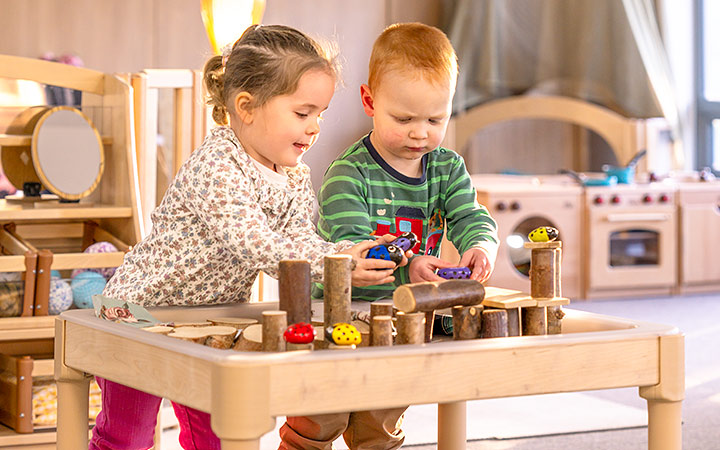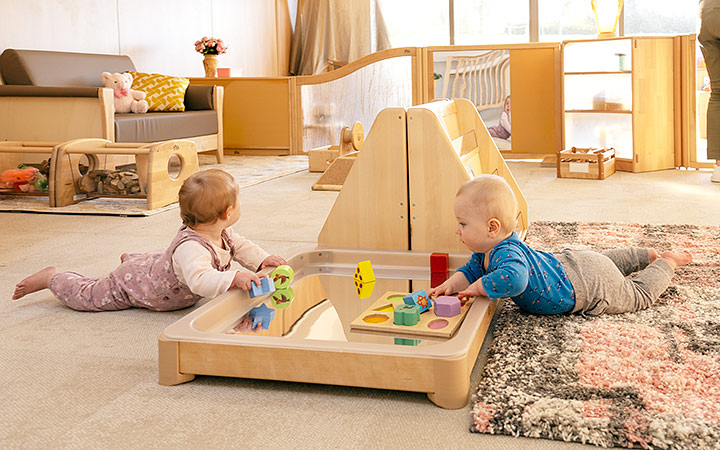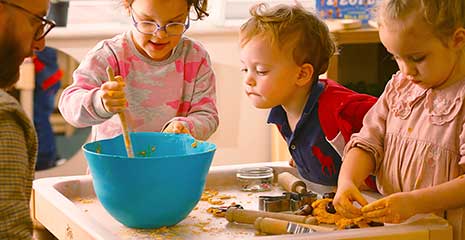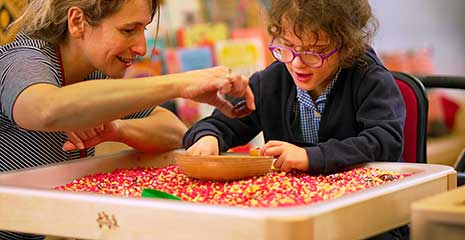The importance of sensory play
| May 2019
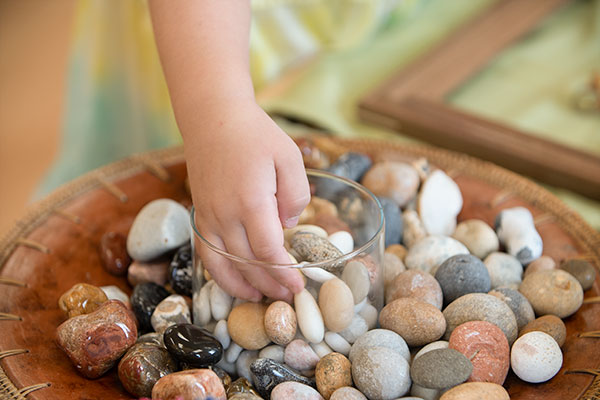
“If it hasn’t been in the hand and body, it can’t be in the brain.”
Children are natural scientists—investigating, exploring, and experimenting with the materials found in their environment. In the past, children were expected to go outside to play. They picked up sticks, rocks, and flowers to sort and count. How many times, as a child, did you watch a caterpillar on the ground, following it closely to see where it was going? Did you ride bicycles around the block and play Hide-and-Seek outside with friends until you were called inside for dinner? These experiences helped us develop our senses and taught us to self-regulate our actions, preparing us ultimately for the more formal education of school.
Today, many children are relegated to playing indoors. Video games, television, and computer games are the primary indoor occupations. Even though these activities provide visual and auditory stimulation, they are fast-paced and don’t allow the child to self-regulate. At the same time, parents and teachers are increasingly pressured to “prepare” children for school. Unfortunately this results in younger and younger children being expected to complete worksheets and other inappropriate assessments. Playing video games, watching television, or doing desk work hinders a child from using all their senses to explore, discover, and learn from their surrounding environment.

The importance of sensory play
Why is sensory play important? What factors influence sensory development for a young child? How do sensory activities add value to a child’s overall development?
Sensory play includes any play activities that encourage a child to explore materials which stimulate their senses. These activities can range from yoga or dancing to sand play or finger painting. Often adults are hesitant to offer a child opportunities to participate in sensory play as this type of play can be messy and loud, or could result in disruptive behaviour. However, with a few simple rules, a thoughtfully prepared environment, and enough time, the benefits of sensory play for a child are invaluable.
Sensory play enhances the way in which a child reacts to their environment through visual, auditory, kinaesthetic, olfactory, and gustatory perceptions. Young children have a physical and emotional desire to see, hear, touch, smell, and taste things that are within reach and new to them. As a child grows, the need for exploring materials within their world continues. Sensory exploration enhances cognitive, social, emotional, and behavioural development.
Fostering sensory play indoors
The outdoors naturally supports a child’s development as children explore their environment with all their senses. This should be encouraged as much as possible. However, when the weather or other conditions inhibit outdoor play, opportunities for similar exploration should be fostered indoors. This will take more creativity and preparation on the part of the adult. Many natural loose parts such as pine cones, flowers, or stones can be brought inside for discovery and play. Your Sensory Table can be utilised for more than just sand or water play. Try filling it with other natural materials such as snow, dirt, bark, fall leaves, or pine needles. (Hint: If you don’t have a sensory table, an outgrown baby bath tub works great for sensory play in a home environment.)
Open ended art experiences can also foster sensory exploration. Finger painting, for example, is an appropriate activity that stimulates multiple senses with the unique smell and feel of the starchy paint. It is just as fun to smear paint all over your hands as it is to spread it on the paper! To an adult, however, the activity looks messy and the immediate reaction might be to ask the child to wash their hands. As soon as an adult intervenes in such a way, the sensory learning connection abruptly ends. It would be far more valuable for the adult to instead discuss how the paint looks on paper and how it feels between the fingers.
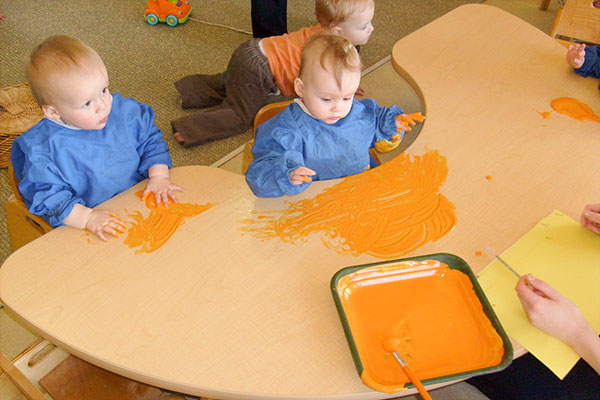
Sensory play with household materials
Indoor exploration can encompass a variety of sensory activities. Adults can create sensory play activities that meet the child’s sensory needs using common household materials. For example, the following simple indoor activities promote sensory development and can be set up easily by parents or teachers:
Visual
- Paint with water on tissue paper. Use eyedroppers to encourage fine motor skills.
- Mix baking soda and coloured jello powder, then slowly pour in vinegar for a visual explosion.
- Repurpose wrapping paper and ribbon remnants by gluing them onto a piece of paper.
- Scribble on aluminium foil using coloured markers.
Auditory
- Create a variety of sound effects using pots, pans, stainless steel, and wooden utensils.
- Read a familiar book, leave off the last word of a rhyme and ask children to complete the phrase.
Kinaesthetic
- Tape bubble wrap around children's feet for a unique walking experience.
- Try painting with your feet. Put the paper on the floor and remove the children's shoes and socks.
- Practice yoga poses such as the tree pose, flower pose, star pose, and frog pose.
- Construct an indoor obstacle course using couch cushions, blankets, pool noodles, and hula hoops.
- Pretend to move like an animal and ask children to imitate the movement.
Olfactory
- Create a smell laboratory using spices from the kitchen.
- Play “Guess that Scent” using variety of lotions, like sunscreen, hand soap, dish soap, tooth paste.
Gustatory*
- Taste and compare sweet versus salty food items, such as mini marshmallows and pretzel sticks.
- Play “Guess that Flavour” using ice cream or smoothie flavours
- Take a bite from a variety of apples, such as Red Delicious, Honeycrisp, Golden Delicious, Gala, and Fuji
*Note: Be aware of your program regulations regarding gustatory activities occurring in a classroom. Adults must be aware of food allergies and policies toward the use of food outside of snack and meal times.
Provide enough time
Finally, remember that all exploration takes time. If a child is to become attuned to and engaged with their environment, they will need time to explore, discover, and connect with all their senses. When this is encouraged, challenging behaviours naturally lessen. Children learn to self-regulate, communicate their ideas, and are ready to absorb new information. Most importantly, children will find a joy and enthusiasm for learning which will carry them through their whole lives.
My senses are good to me, good to me.
I can touch, taste, smell, hear, and see!
I like sour and I like sweet!
I like cold and I like heat!
I like bold and I like bright!
I like sounds and I like sight!
Put them all together and you will find
I like to touch and move which helps my mind!

